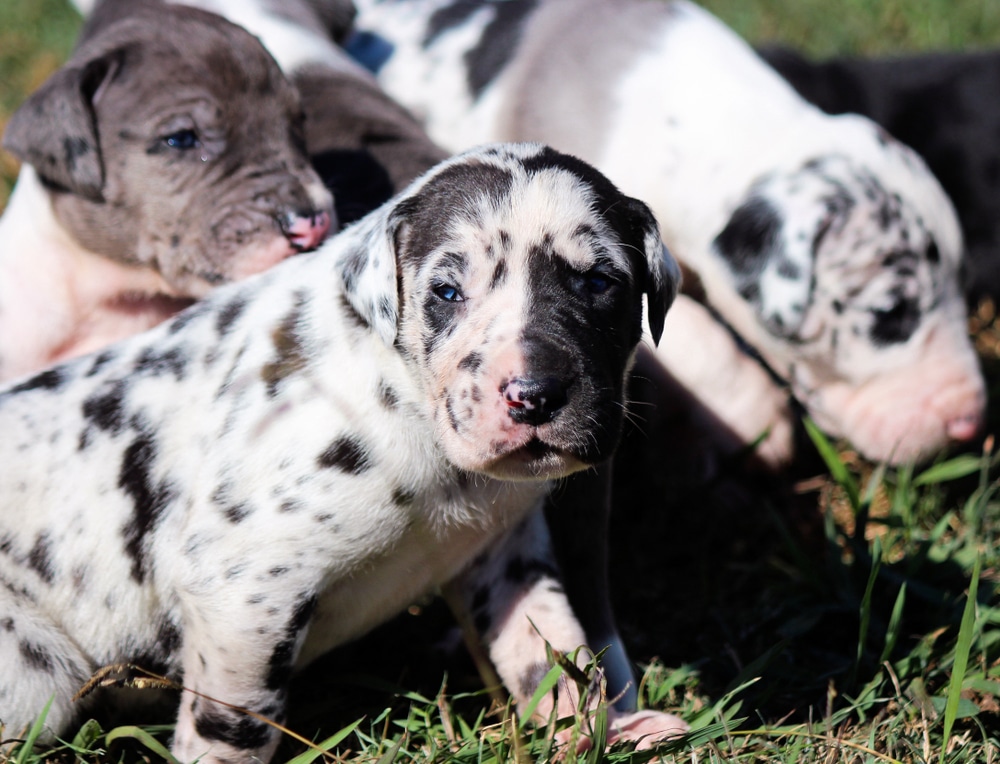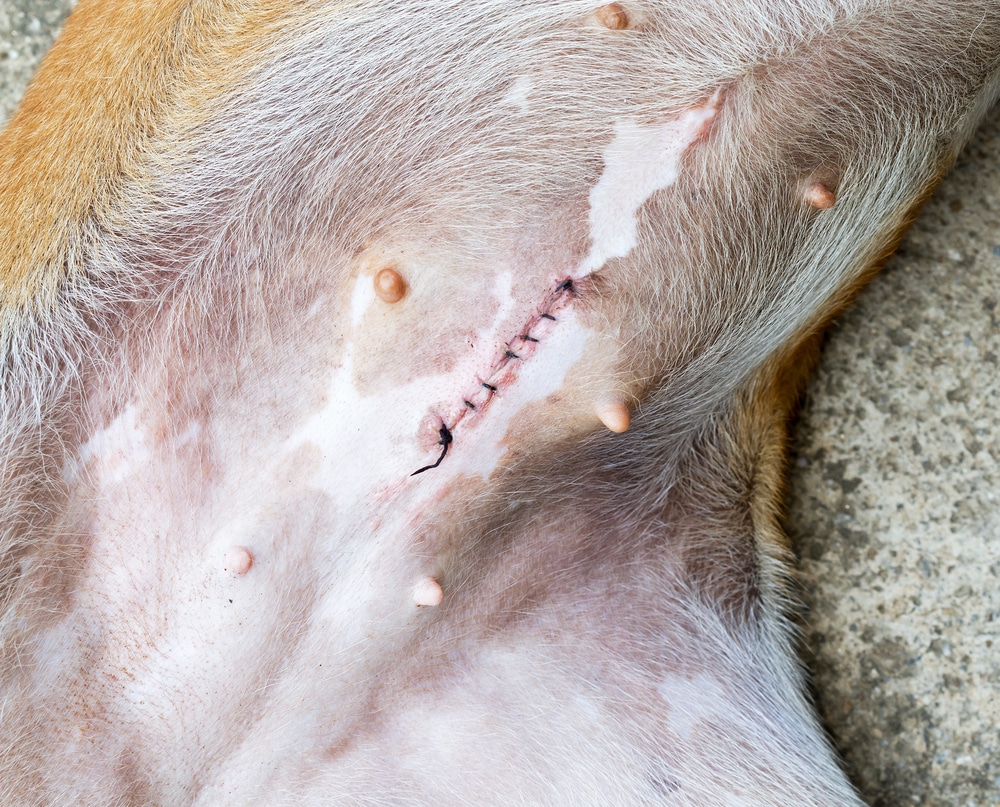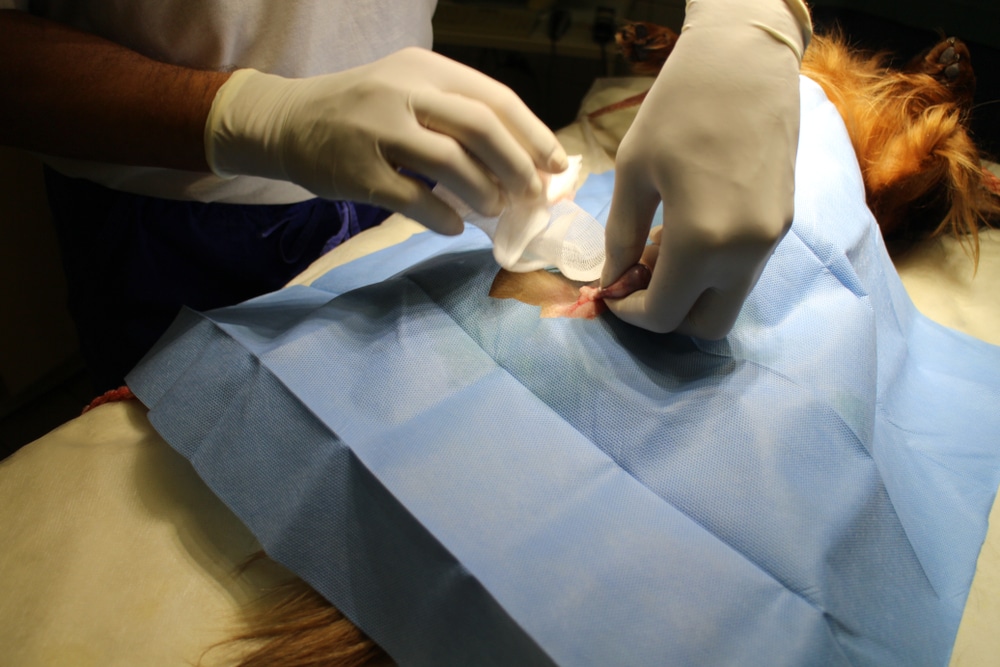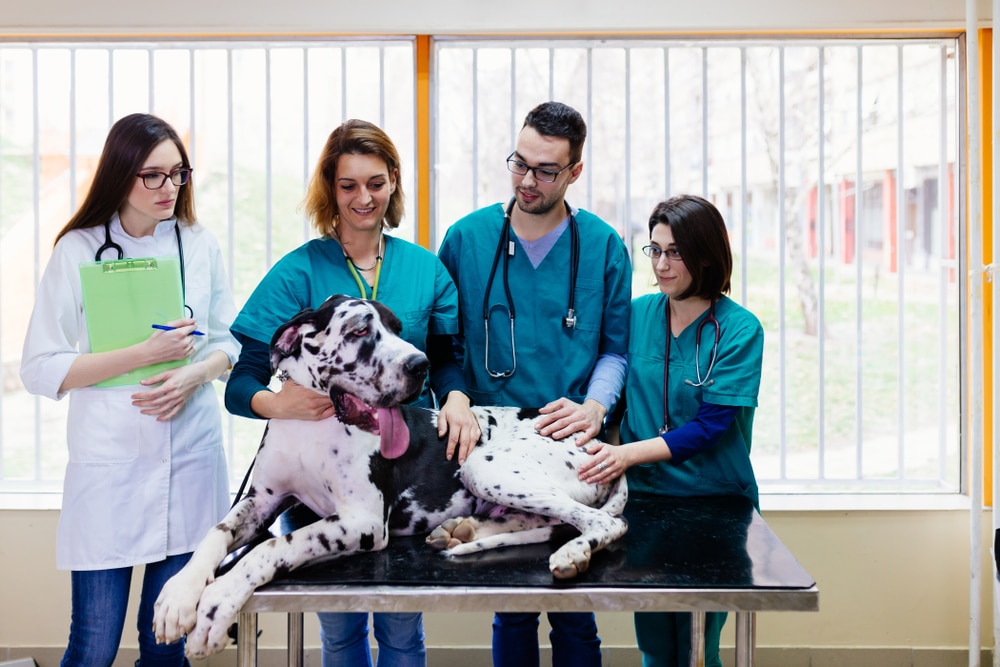“This post contains affiliate links, and I will be compensated if you make a purchase after clicking on my links.”
Last Updated on December 19, 2022
Typically, spaying and neutering a dog are known to be life-saving procedures. They are mainly known for their benefits, both to the dog and the owner. And they are not frowned upon, unlike other procedures such as ear cropping or tail docking.
Veterinarians generally suggest to spay or neuter a dog as early as 4 months old. However, neutering or spaying a dog is not the same for every breed. This is why knowing the right time to spay or neuter your own dog is important.
Want to know when is the best time to spay or neuter your dog? Then you’ve come to the right place! Continue reading to find out more.
Why Should You Spay or Neuter A Dog

It Helps Control the Population
When you decide to spay or neuter your dog, you help control pet overpopulation and the homelessness crisis, especially in the US. Millions of dogs end up in the streets because there aren’t enough homes for them to stay at. And more or less, these homeless dogs get abandoned in the streets and abused in many different ways.
According to the American Society for the Prevention of Cruelty to Animals (ASPCA), 3.1 million dogs enter US shelters each year and 390,000 of these dogs are euthanized. Furthermore, according to PetPedia’s statistics, almost 65% of all abused animals are dogs.
It Increases the Chances of a Longer Life
A lot of studies and research have proven that spayed and neutered dogs have lived longer than their intact counterparts.
A Pet Health report by Banfield Pet Hospital in 2013 said that neutered male dogs live 18% longer. And spayed female dogs live 23% longer than dogs who haven’t undergone the procedure.
Furthermore, there is a also reduced risk of developing life threatening health problems like mammary cancer, prostate cancer and uterine infections. Furthermore, it helps curb territorial and aggressive behaviors.
Spaying a Dog
Spaying a dog is the medical procedure performed by a veterinarian to remove the female reproductive organs to sterilize a dog.

Spaying has a lot of benefits beyond just preventing unwanted pregnancies. Some of its benefits are helping control overpopulation, eliminating the stress and discomfort of being in heat and of course, reducing the chances of infections and cancer.
Factors to Consider Before Spaying a Dog
Before getting your dog spayed, it’s important to know the factors that can affect such an important decision. Below are things you need to be aware of before spaying a dog:
1. Breed
Generally, dogs can be spayed as young as 4 months old. But, this is not applicable to all breeds. When spaying, you have to consider the breed and their long growth period. For large canine breeds like the Great Dane, 4 months is too early for them.
For Great Danes, you have to give them enough time to fully develop bones and muscles to support their huge size. If not, it will affect their overall development and your Great Dane will end up with muscle or bone issues.
2. Age
When spaying a dog, you have to also consider their age. A dog’s age is an important factor to help you determine the best time to get this procedure done.
For female dogs, it’s important that you let them reach maturity first. This is because their sexual reproductive organs have hormones that help them grow properly. If you spay them too early, these hormones are removed and the dog won’t be able to develop properly.
3. Behavioral changes
A female dog will undergo heat naturally as a sign of sexual maturity. Usually, a full heat cycle lasts for 2 to 4 weeks, depending on the breed.
Changes in a female dog’s behavior happen when they aren’t spayed and have their heat cycle. The female dog can be in a lot of discomfort and stress, and this affects their overall mood and behavior.
The hormone changes during their heat results in unusual irritability, aggression, running away from home to find male dogs, frequent urination and even howling for attention.
When to Spay a Dog
Knowing when to spay your dog is important. And while the widely accepted age to get your dog spayed is as early as 4 months, it can still be a case-to-case basis.
For small to medium-sized breeds, spaying a dog at 4 or 6 months old and before they get their first heat is recommended. Spaying a small or medium-sized dog before they have their first heat cycle will greatly reduces the risk of mammary cancer.
However, for Great Danes, it is recommended to spay them after their first heat cycle. This is because your female Great Dane’s hormones positively contribute to their overall growth and development.
Large breeds usually undergo their first heat cycle at six months old. But they can also have their first heat at 12 months old. So, if you spay Great Danes earlier than 9 months and before their first heat cycle, they can develop and suffer from muscle or bone-related problems such as arthritis.
But if you’re still unsure when to spay your dog, it’s best to consult with your veterinarian to see when is the best time to get them altered.
Neutering a Dog
Neutering a dog is the same as spaying a dog, but it is only done to male dogs. And the procedure involves removing the dog’s testicles to sterilize them.

The surgery ensures prevention of testicular cancer and prostate problems. And your dog is more likely to behave better after being neutered.
However, contrary to popular belief, neutering is not the ultimate solution to treating aggressive behavior. It only helps reduce such behavior due to the decreasing levels of testosterone brought about by the procedure.
Factors to Consider Before Neutering a Dog
Deciding to neuter a dog, like spaying, should be an informed decision. See below factors to consider before neutering a dog:
1. Breed
When neutering a dog, you have to consider the breed, as a large breed’s growth is different compared to a small or average-sized breed’s growth.
Great Danes do not reach full growth as fast as small or medium-sized breeds. Usually, they need more time to fully reach maturity. And this is important when considering the right time to neuter your dog.
A large canine breed like the Great Dane can still be growing even at 12 months of age.
2. Age
Neutering a dog is not a one-size-fits-all procedure. A dog’s age goes hand-in-hand with its breed when determining the best time to neuter them. While there are generally recommended ages by professionals, it still depends at what age a dog reaches maturity.
For small and averaged-sized dogs, since they mature faster than large breeds, they can be neutered at an early age. However, for Great Danes, if you neuter them before 12 months, there’s a higher chance of them developing orthopedic issues.
3. Behavioral changes
As male dogs sexually mature, they’ll most likely be more territorial and aggressive. And they’ll start marking their territories with their urine, and that includes your home.
While neutering doesn’t fully fix behavioral changes, altered male dogs become less aggressive, possessive and territorial.
Furthermore, intact male dogs will try all the creative ways to find a mate by escaping home. And this can be dangerous because it might result in an injury from a road accident or a fight with other male dogs.
When to Neuter a Dog
Generally, neutering a dog can be done as early as 8 weeks. And for average-sized breeds, the best age to neuter a male dog is around 6 to 9 months old.
But for large breeds like the Great Dane, it’s best to neuter them at 12 to 15 months old. Considering their growth period, it’s always best to wait until a Great Dane has fully grown and matured to prevent complications.
Keep in mind that complications arise when dogs are neutered too early or too late. But they are less likely to develop tumors if they are neutered at the right time. So, if you’re unsure when is the best time to neuter your dog, get a professional consultation with your dog’s vet.
Our Suggestions

Spaying or neutering a dog, when done at the right time, will increase the chances of your dog to live a longer and happier life. Furthermore, it saves you a lot of physical, emotional and financial troubles since you won’t have to care for unexpected litters of puppies.
Of course, we do acknowledge that spaying and neutering a dog are major surgical procedures and that there are risks. However, since they are one of the most common surgeries that veterinarians perform on dogs, complications during or after the procedure can be very low.
We want our dogs to be healthy and safe before, during and after the procedure. So the best way to go is to consult with your dog’s veterinarian to determine the best time for the procedure.
Thnx!
As a life-time lover of Danes who has been blessed to share my life with more than a dozen of the magnificent beasts over the years, I was happy to stumble upon your posts.
Your content is good and interesting. However, it would significantly benefit from the skill set of a good copy editor. I am wondering if perhaps you are writing in a language other than English and the punctuation and word choice mishaps are a function of translation. Either way, please keep producing content. Your love for the breed shines throughout all of your writing.
Thanks again.